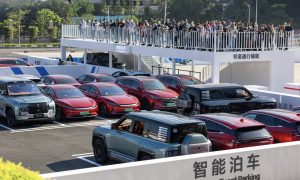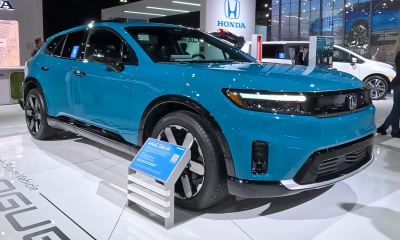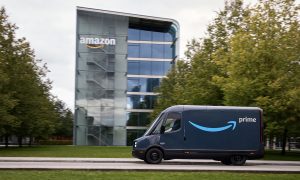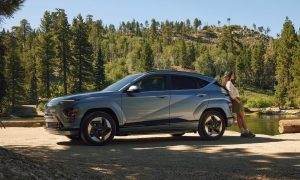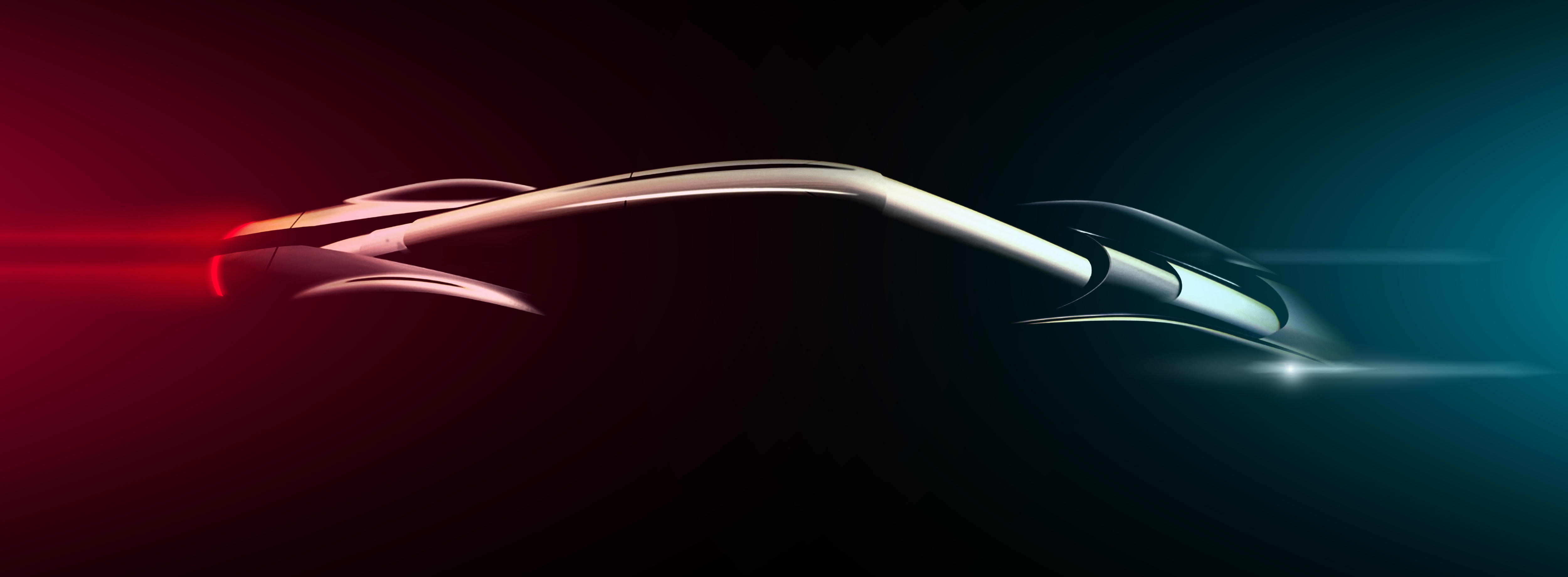

News
Automobili Pininfarina teases electric hypercar, credits Tesla’s Elon Musk for “electric vehicle movement”
Automobili Pininfarina, the Munich-based carmaker with deep roots in both the luxury market and Formula E recently teased its upcoming electric hypercar, code-named PF0 (Pininfarina Zero), set to debut in August at the exclusive Pebble Beach Concours in Monterey, California.
Its sister company Pininfarina is the legendary design house responsible for revered supercars like the Ferrari Testarossa, GT 250, and Enzo. In fact, the only street legal Ferrari’s not designed by them are the 1973 Dino 308 GT4 and 2013’s LaFerrari. They’ve also designed cars for Fiat, Alfa Romeo, BMW, Maserati, among others, and manufactured cars for GM, Mitsubishi, and Volvo. Another fun fact -Pininfarina had their own full-sized wind tunnel in 1972, eight years before GM had one.
Automobili Pininfarina has also assembled some impressive talent from across the automotive world. Their executive group includes former Jaguar / Land Rover, Bugatti, Volvo, and Audi employees, to name a few. Their lead designer, Luca Borgogno, previously led Lamborghini’s Turin design studio for Pininfarina, while Formula E driver Nick Heildfeld will be joining the team next year to help deliver a ‘race-bred’ hypercar.
The venture into manufacturing their own car is a sort of rebirth for Pininfarina. The company had fallen on hard times with debt restructuring in the late 2000’s and reductions in their workforce. Then in 2015 Mahindra & Mahindra stepped in to purchase a majority holding. If you aren’t familiar with M&M, they are manufacturer based out of India and one of the founding ten members of Formula E. They are India’s leading electric vehicle manufacturer.
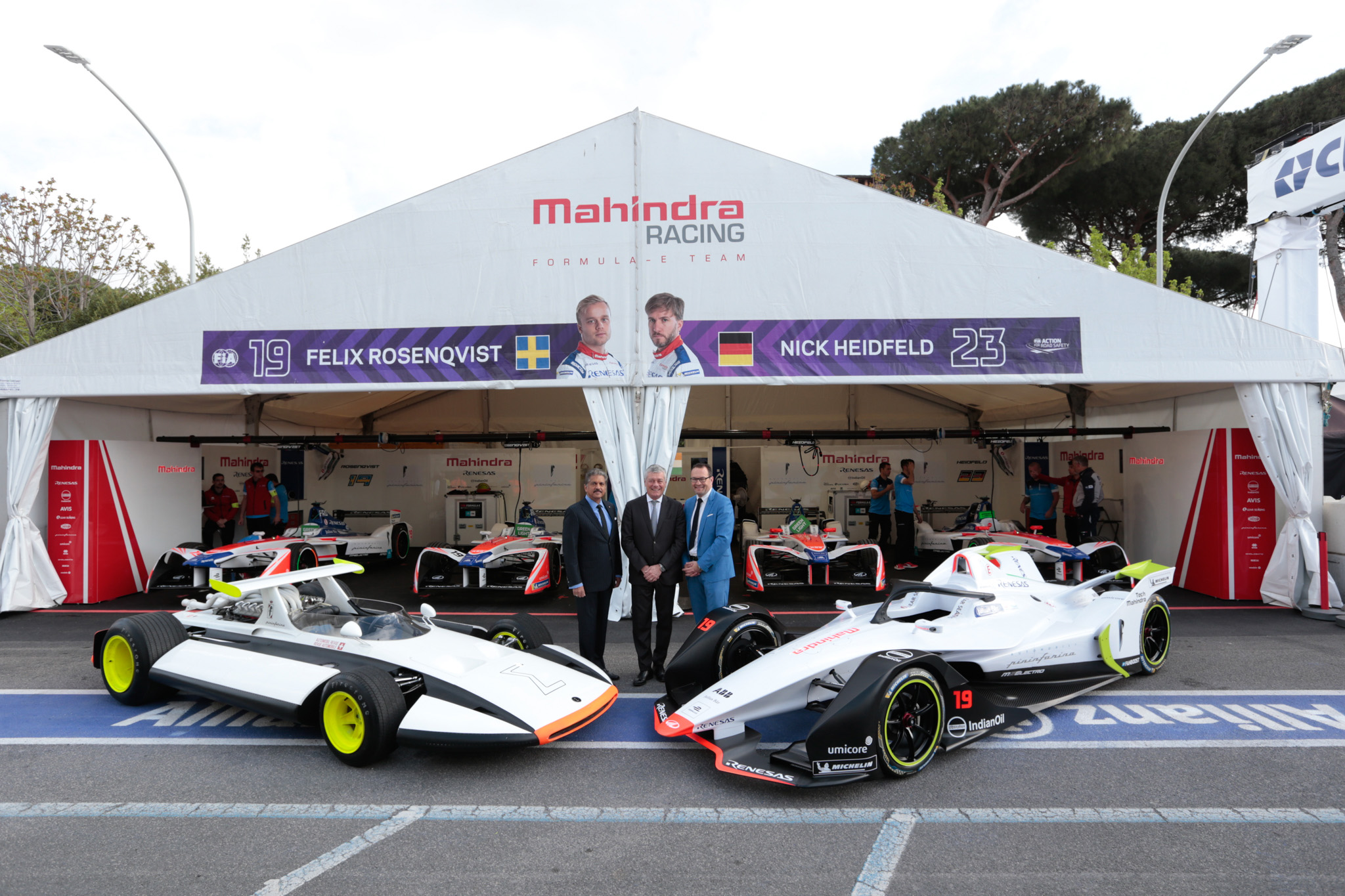
Mahindra Racing
I spoke with Automobili Pininfarina’s CEO Michael Perschke, Chief Brand Officer Dan Connell, and Design Director Luca Borgogno from their July 12th North American brand launch event in New York. My first question was why they chose to go fully electric, with so many established luxury automakers tepidly looking to hybrids for their first venture into electrification.
Michael was quick to give credit to Tesla and Elon Musk. “We wouldn’t be sitting here today if Elon hadn’t started the electric vehicle movement”. He said that to put both technologies on board means you are not committed to either and you don’t start designing a brand new high tech hypercar based on technology that’s over 100 years old. “You don’t want to get stuck with combustion engines,” he said. “The point of no return has been crossed, combustion engines are aging. They can be further improved but they are not a leapfrog technology”. These comments are important to take note of, as someone who has spent his career with companies like Audi and Mercedes, Mr. Perschke’s views on where the industry needs to go are telling.
Manufacturers and the oil industry often claim higher efficiencies are possible with combustion, but to achieve that requires greater complexity and expense, with depreciating returns – all while electric vehicles are making a big gain in performance and cost.
“If you want a brand that’s relevant in 2050, you don’t start with a drivetrain that’s been used since 1890” – Michael Perschke, Automobili Pininfarina.
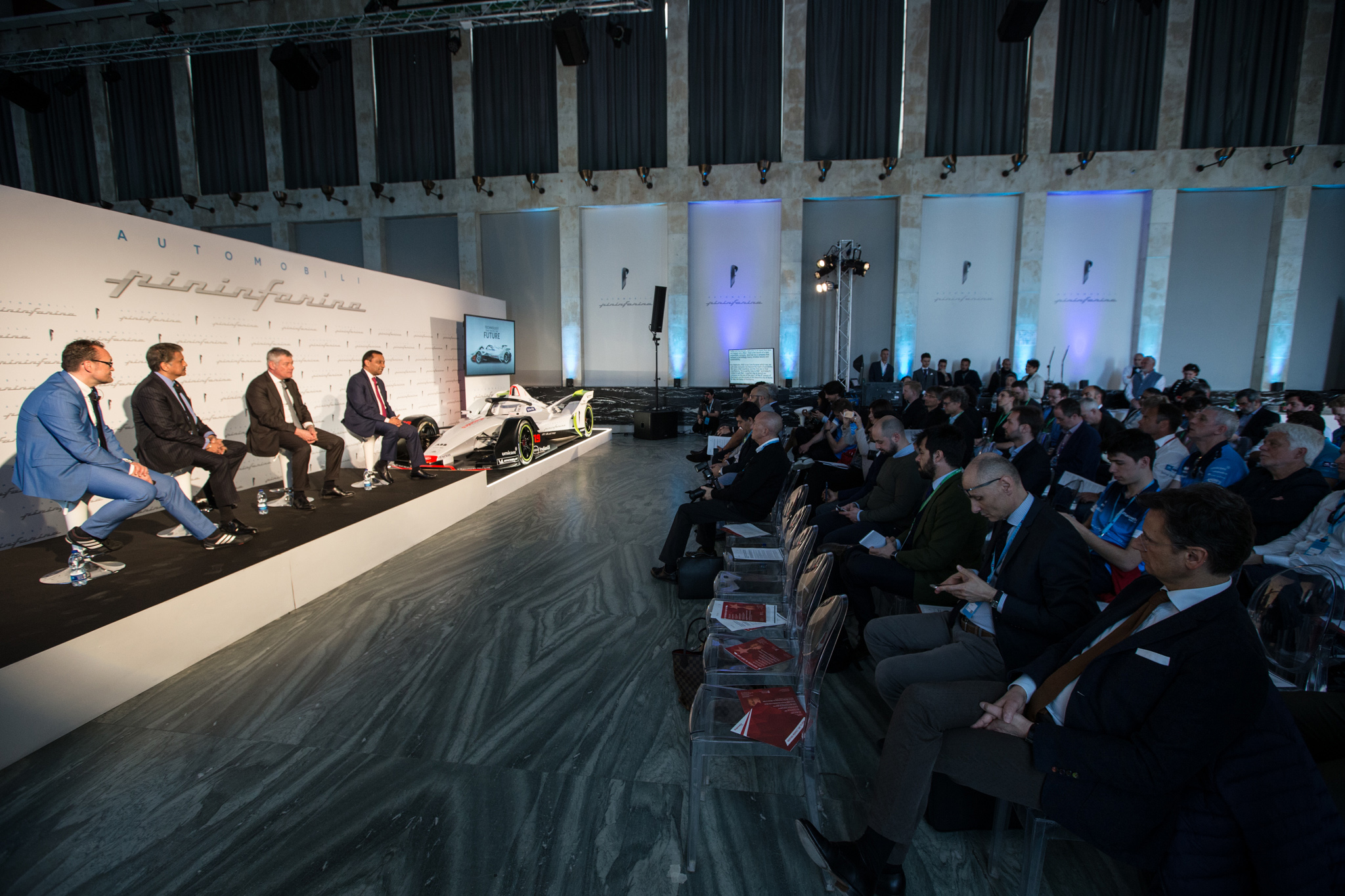
Automobili Pininfarina North American Brand Launch – New York July 12th, 2018
The car industry has seen several EV startups, with bold claims, but I think this one is legit. They have the right mix of experience, innovation, talent, and financial support. They are certainly targeting some impressive performance figures:
Release Date: 2020
0 – 100 km/h (62 mph): < 2 seconds
0 – 300 km/h (186 mph): < 12 seconds
Top speed: > 400 km/h (250 mph)
Range: > 500 km (310 miles)
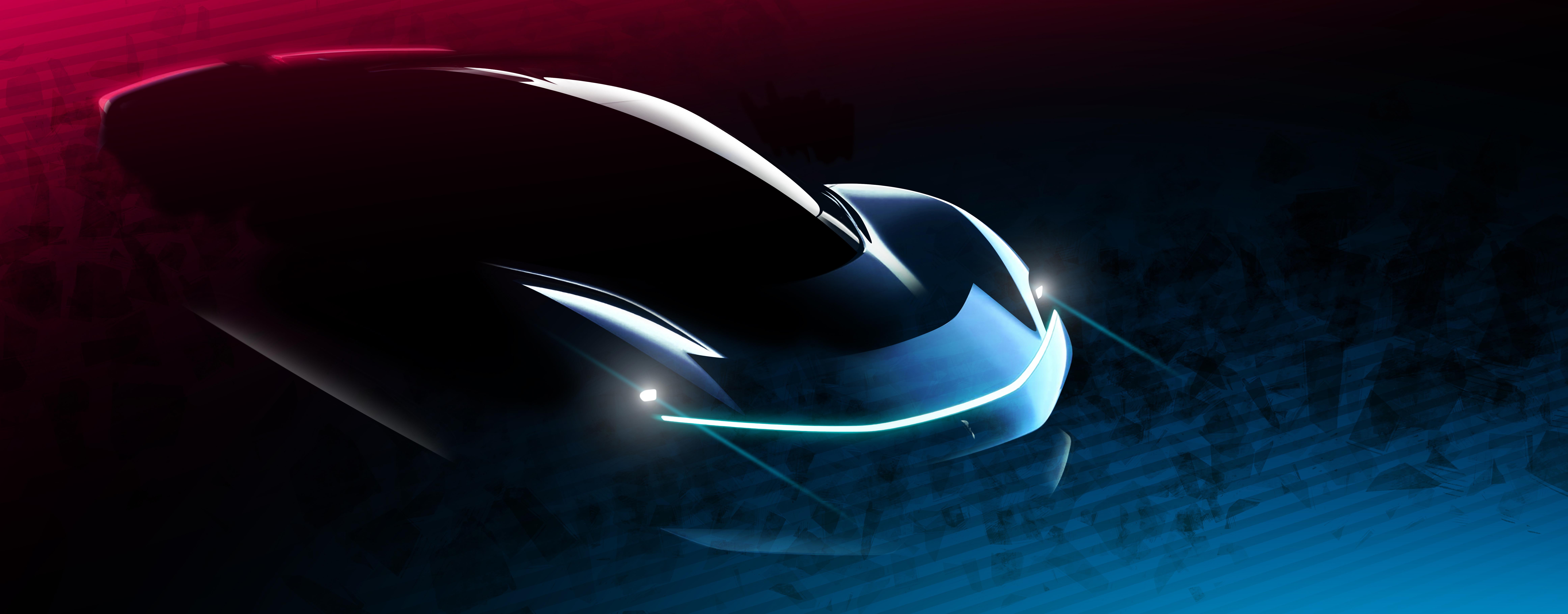

You’ll notice that both the timing and the performance figures are conspicuously similar to Tesla’s coming Roadster, but any speculation of competition with Tesla was quickly shot down. “We are complimenting the offering that Elon has launched…. with a focus more on the European supercar design styling heritage”. On the raw specifications, this vehicle seems an obviously competitor but that’s oversimplifying the market. With a reported price tag exceeding $2 million dollars, they are obviously targeting a different segment of the market – it’s a European hypercar after all. And while that may seem to limit its direct impact, I’m excited to see what it can do and how it will influence the performance luxury vehicle segment. As Elon has noted, we still need to fully remove the “performance halo” surrounding high-end combustion cars. That’s Tesla’s goal with the new Roadster and I hope Automobili Pininfarina can help do that for Italian supercars as well. How many posters and computer desktop backgrounds still depict gas burning supercars? It’s time they were replaced.
Luca Borgogno, their design director, shared some of his insights into the design with me.
“We have two key words,” he said “purity and beauty”. He said it was important that all design elements serve a purpose, that form and function must be joined together for a purity of design. Their intent is for the PFO to convey both the legacy of European sports cars and link it to the modern technology that’s behind it.
For the exterior, he said, low drag was obviously important for a vehicle capable of going over 250mph. Keeping the middle of the car as a clean, unobstructed line improves the aerodynamics he said. To do this the rear of the vehicle will have a split rear wing, with each side capable of individually articulating for improved downforce and even provide for air braking. It certainly has a sleek looking profile.
They aren’t releasing any images of the interior yet but he says it again follows the same purity ethos, with clean simplicity and a high degree of seamless digitization. It seems this is a new approach Tesla has pioneered. To add beauty to the interior through simplification. I’m certainly supportive, the interior of my Model 3 is beautiful and immediately relaxing. Automobili Pininfarina seems to be embracing the idea as well.
Luca also noted that purity wasn’t just about interior design but also in the materials they use. That means using as much sustainable and natural materials as possible.
It became apparent that they were designing this car, not just because they loved cars, but because they see where society is going and that we need a more sustainable approach. “Sustainability should not be a buzzword,” Michael said. “For us, it will be the full 360 degree approach. It starts at the tailpipe… but we must also look at the manufacturing, the battery second life, and using renewable energy”. They are currently working on their roadmap to full sustainability and will have explicit targets for it, with more information coming this fall. They complimented Tesla as leaders in this area as well, including their solar installation at the Gigafactory.
The technology to make this car possible seems to be right around the corner. Tesla already has their prototype driving around and reportedly “breaking the laws of physics”. If Automobili Pininfarina can integrate some of their parent companies Formula E tech, then there’s no reason to think this car won’t meet their goals. They are producing the car in small volumes, so mass production “hell” isn’t a concern, but they did note more vehicle models will come, specifically that SUVs are in their future. Is this the start of a new all-electric luxury brand in Europe? One can hope.
It seems they have the right mix to be successful and I hope we see them soon.
Afterword:
At the end of the interview, I asked them if they drive electric cars or which ones they particularly enjoy. Michael quickly noted test driving the Tesla P100D with ludicrous mode was his favorite so far and that’s probably the one he’s going to buy. He also said he’d look at the Volvo XC90 plug-in hybrid as a family car. A Ferrari, he said, would also likely be needed – although I assume that’s at least until their PF0 is available.
Elon Musk
Tesla Supercharger Diner food menu gets a sneak peek as construction closes out
What are you ordering at the Tesla Diner?

The Tesla Supercharger Diner in Los Angeles is nearing completion as construction appears to be winding down significantly. However, the more minor details, such as what the company will serve at its 50s-style diner for food, are starting to be revealed.
Tesla’s Supercharger Diner is set to open soon, seven years after CEO Elon Musk first drafted the idea in a post on X in 2018. Musk has largely come through on most of what he envisioned for the project: the diner, the massive movie screens, and the intended vibe are all present, thanks to the aerial and ground footage shared on social media.
We already know the Diner will be open 24/7, based on decals placed on the front door of the restaurant that were shared earlier this week. We assume that Tesla Optimus will come into play for these long and uninterrupted hours.
The Tesla Diner is basically finished—here’s what it looks like
As far as the food, Tesla does have an email also printed on the front door of the Diner, but we did not receive any response back (yet) about what cuisine it will be offering. We figured it would be nothing fancy and it would be typical diner staples: burgers, fries, wings, milkshakes, etc.
According to pictures taken by @Tesla_lighting_, which were shared by Not a Tesla App, the food will be just that: quick and affordable meals that diners do well. It’s nothing crazy, just typical staples you’d find at any diner, just with a Tesla twist:
Tesla Diner food:
• Burgers
• Fries
• Chicken Wings
• Hot Dogs
• Hand-spun milkshakes
• And more https://t.co/kzFf20YZQq pic.twitter.com/aRv02TzouY— Sawyer Merritt (@SawyerMerritt) July 17, 2025
As the food menu is finalized, we will be sure to share any details Tesla provides, including a full list of what will be served and its prices.
Additionally, the entire property appears to be nearing its final construction stages, and it seems it may even be nearing completion. The movie screens are already up and showing videos of things like SpaceX launches.
There are many cars already using the Superchargers at the restaurant, and employees inside the facility look to be putting the finishing touches on the interior.
🚨 Boots on the ground at the Tesla Diner:
— TESLARATI (@Teslarati) July 17, 2025
It’s almost reminiscent of a Tesla version of a Buc-ee’s, a southern staple convenience store that offers much more than a traditional gas station. Of course, Tesla’s version is futuristic and more catered to the company’s image, but the idea is the same.
It’s a one-stop shop for anything you’d need to recharge as a Tesla owner. Los Angeles building permits have not yet revealed the date for the restaurant’s initial operation, but Tesla may have its eye on a target date that will likely be announced during next week’s Earnings Call.
News
Tesla’s longer Model Y did not scale back requests for this vehicle type from fans
Tesla fans are happy with the new Model Y, but they’re still vocal about the need for something else.

Tesla launched a slightly longer version of the Model Y all-electric crossover in China, and with it being extremely likely that the vehicle will make its way to other markets, including the United States, fans are still looking for something more.
The new Model Y L in China boasts a slightly larger wheelbase than its original version, giving slightly more interior room with a sixth seat, thanks to a third row.
Tesla exec hints at useful and potentially killer Model Y L feature
Tesla has said throughout the past year that it would focus on developing its affordable, compact models, which were set to begin production in the first half of the year. The company has not indicated whether it met that timeline or not, but many are hoping to see unveilings of those designs potentially during the Q3 earnings call.
However, the modifications to the Model Y, which have not yet been officially announced for any markets outside of China, still don’t seem to be what owners and fans are looking forward to. Instead, they are hoping for something larger.
A few months ago, I reported on the overall consensus within the Tesla community that the company needs a full-size SUV, minivan, or even a cargo van that would be ideal for camping or business use.
Tesla is missing one type of vehicle in its lineup and fans want it fast
That mentality still seems very present amongst fans and owners, who state that a full-size SUV with enough seating for a larger family, more capability in terms of cargo space for camping or business operation, and something to compete with gas cars like the Chevrolet Tahoe, Ford Expedition, or electric ones like the Volkswagen ID.BUZZ.
We asked the question on X, and Tesla fans were nearly unanimously in support of a larger SUV or minivan-type vehicle for the company’s lineup:
🚨 More and more people are *still* saying that, despite this new, longer Model Y, Tesla still needs a true three-row SUV
Do you agree? https://t.co/QmbRDcCE08 pic.twitter.com/p6m5zB4sDZ
— TESLARATI (@Teslarati) July 16, 2025
Here’s what some of the respondents said:
100% agree, we need a larger vehicle.
Our model Y is quickly getting too small for our family of 5 as the kids grow. A slightly longer Y with an extra seat is nice but it’s not enough if you’re looking to take it on road trips/vacations/ kids sports gear etc.
Unfortunately we…
— Anthony Hunter (@_LiarsDice_) July 17, 2025
Had to buy a Kia Carnival Hybrid because Tesla doesn’t have a true 3 row vehicle with proper space and respectable range. pic.twitter.com/pzwFyHU8Gi
— Neil, like the astronaut (@Neileeyo) July 17, 2025
Agreed! I’m not sure who created this but I liked it enough to save it. pic.twitter.com/Sof5nMehjS
— 🦉Wise Words of Wisdom – Inspirational Quotes (IQ) (@WiseWordsIQ) July 16, 2025
Tesla is certainly aware that many of its owners would like the company to develop something larger that competes with the large SUVs on the market.
However, it has not stated that anything like that is in the current plans for future vehicles, as it has made a concerted effort to develop Robotaxi alongside the affordable, compact models that it claims are in development.
It has already unveiled the Robovan, a people-mover that can seat up to 20 passengers in a lounge-like interior.
The Robovan will be completely driverless, so it’s unlikely we will see it before the release of a fully autonomous Full Self-Driving suite from Tesla.
Energy
Tesla launches first Virtual Power Plant in UK – get paid to use solar
Tesla has launched its first-ever Virtual Power Plant program in the United Kingdom.

Tesla has launched its first-ever Virtual Power Plant program in the United Kingdom. This feature enables users of solar panels and energy storage systems to sell their excess energy back to the grid.
Tesla is utilizing Octopus Energy, a British renewable energy company that operates in multiple markets, including the UK, France, Germany, Italy, Spain, Australia, Japan, New Zealand, and the United States, as the provider for the VPP launch in the region.
The company states that those who enroll in the program can earn up to £300 per month.
Tesla has operated several VPP programs worldwide, most notably in California, Texas, Connecticut, and the U.S. territory of Puerto Rico. This is not the first time Tesla has operated a VPP outside the United States, as there are programs in Australia, Japan, and New Zealand.
This is its first in the UK:
Our first VPP in the UK
You can get paid to share your energy – store excess energy in your Powerwall & sell it back to the grid
You’re making £££ and the community is powered by clean energy
Win-win pic.twitter.com/evhMtJpgy1
— Tesla UK (@tesla_uk) July 17, 2025
Tesla is not the only company that is working with Octopus Energy in the UK for the VPP, as it joins SolarEdge, GivEnergy, and Enphase as other companies that utilize the Octopus platform for their project operations.
It has been six years since Tesla launched its first VPP, as it started its first in Australia back in 2019. In 2024, Tesla paid out over $10 million to those participating in the program.
Participating in the VPP program that Tesla offers not only provides enrolled individuals with the opportunity to earn money, but it also contributes to grid stabilization by supporting local energy grids.
-

 Elon Musk1 day ago
Elon Musk1 day agoWaymo responds to Tesla’s Robotaxi expansion in Austin with bold statement
-

 News1 day ago
News1 day agoTesla exec hints at useful and potentially killer Model Y L feature
-

 Elon Musk2 days ago
Elon Musk2 days agoElon Musk reveals SpaceX’s target for Starship’s 10th launch
-

 Elon Musk3 days ago
Elon Musk3 days agoTesla ups Robotaxi fare price to another comical figure with service area expansion
-

 News1 day ago
News1 day agoTesla’s longer Model Y did not scale back requests for this vehicle type from fans
-

 News1 day ago
News1 day ago“Worthy of respect:” Six-seat Model Y L acknowledged by Tesla China’s biggest rivals
-

 News2 days ago
News2 days agoFirst glimpse of Tesla Model Y with six seats and extended wheelbase
-

 Elon Musk2 days ago
Elon Musk2 days agoElon Musk confirms Tesla is already rolling out a new feature for in-car Grok


